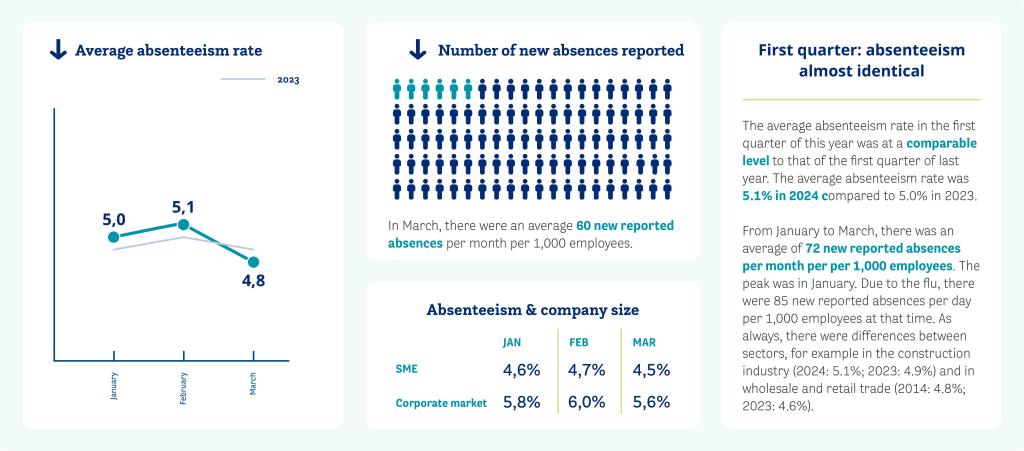Quick decline in flu cases drops absenteeism further in March

Flu wave ends in March
A drop in absenteeism is normal for this time of year. “During the winter months, the flu causes more employees to fall ill,” explains Jurriaan Penders, Company Doctor and Director of Medical Affairs at HumanCapitalCare. “As is often the case, the peak of the flu wave was in January. After that, absenteeism due to the flu decreased faster than last year. Therefore by the end of March, the flu no longer played a significant role as a cause of absenteeism.”
First quarter: comparable to 2023
Health and safety service providers have found the average absenteeism rate in the first quarter of this year to be at a comparable level to that of the first quarter of last year. The average absenteeism rate was 5.1% in 2024 compared to 5.0% in 2023.
From January to March, there was an average of 72 sick days per 1,000 employees per month. The peak occurred in January. Due to the flu, there were 85 sick days per 1,000 employees at that time. This means that in most sectors, absenteeism remained at the same level as the first three months of the previous year. As always, differences can be seen between sectors in terms of absenteeism, for example in the construction industry (2024: 5.1%; 2023: 4.9%) and in wholesale and retail trade (2024: 4.8%; 2023: 4.6%).
Encouraging holiday leave
Data from previous years show a fall in the absenteeism rate in the second quarter. Last year, the average absenteeism rate during this period was 4.3%. Depending on the sector, this is a good time for employers to catch up on any backlogs. At the same time, we also see employers encouraging employees to take holiday leave during this period. “Taking holiday leave on a regular basis gives employees a chance to recharge, allowing them to cope better with stress and pressure at work,” says Jurriaan Penders. “Taking time out to recover is very important. This increases workload capacity and can help prevent or reduce absenteeism in the long run.”